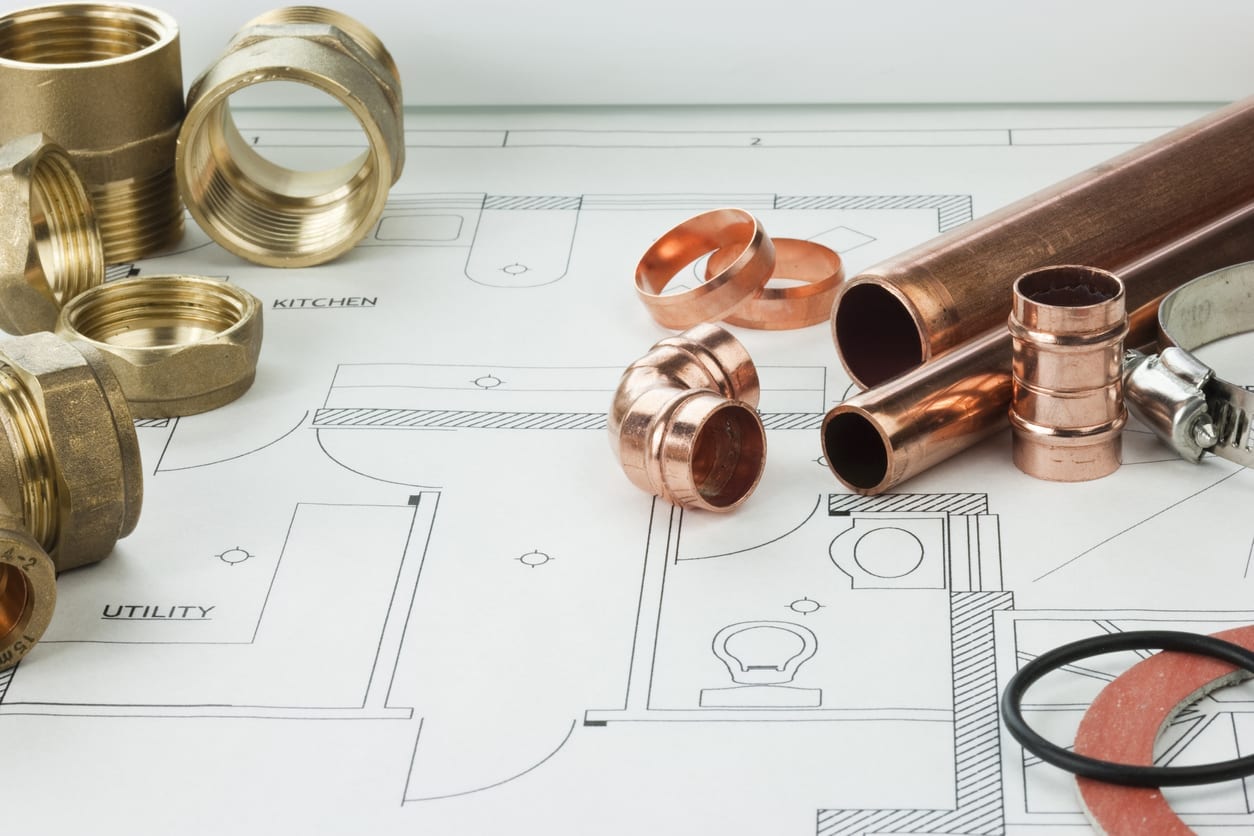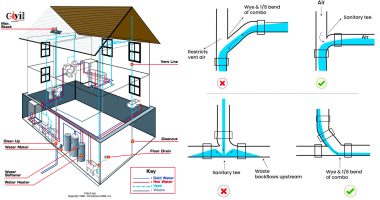How to Understand Your Property's Plumbing System Anatomy
How to Understand Your Property's Plumbing System Anatomy
Blog Article
Do you find yourself looking for tips concerning Exploring Your Homes Plumbing Anatomy?

Recognizing exactly how your home's plumbing system functions is crucial for every homeowner. From supplying tidy water for drinking, cooking, and showering to safely getting rid of wastewater, a well-kept plumbing system is crucial for your household's health and convenience. In this detailed overview, we'll check out the intricate network that composes your home's plumbing and deal ideas on maintenance, upgrades, and taking care of common concerns.
Intro
Your home's pipes system is more than just a network of pipelines; it's a complex system that guarantees you have access to tidy water and effective wastewater removal. Recognizing its components and just how they collaborate can aid you avoid pricey repair work and ensure everything runs efficiently.
Basic Elements of a Plumbing System
Pipelines and Tubing
At the heart of your pipes system are the pipes and tubes that lug water throughout your home. These can be made from various products such as copper, PVC, or PEX, each with its advantages in regards to durability and cost-effectiveness.
Components: Sinks, Toilets, Showers, etc.
Components like sinks, commodes, showers, and bathtubs are where water is utilized in your house. Comprehending exactly how these components connect to the pipes system helps in identifying troubles and preparing upgrades.
Shutoffs and Shut-off Points
Valves regulate the flow of water in your pipes system. Shut-off shutoffs are essential throughout emergencies or when you require to make repair work, permitting you to isolate parts of the system without interrupting water flow to the whole house.
Supply Of Water System
Key Water Line
The main water line links your home to the local water supply or a personal well. It's where water enters your home and is dispersed to numerous fixtures.
Water Meter and Pressure Regulatory Authority
The water meter actions your water usage, while a pressure regulatory authority makes sure that water streams at a secure pressure throughout your home's pipes system, protecting against damage to pipes and components.
Cold Water vs. Warm water Lines
Recognizing the distinction between cold water lines, which supply water straight from the major, and warm water lines, which lug warmed water from the water heater, helps in fixing and planning for upgrades.
Drain System
Drain Pipes Water Lines and Traps
Drain pipelines lug wastewater far from sinks, showers, and commodes to the sewage system or septic tank. Traps avoid drain gases from entering your home and likewise catch particles that might trigger blockages.
Air flow Pipelines
Air flow pipelines permit air right into the drain system, stopping suction that can reduce water drainage and create catches to vacant. Correct ventilation is essential for maintaining the integrity of your plumbing system.
Significance of Appropriate Drain
Guaranteeing appropriate drainage prevents backups and water damage. Regularly cleansing drains pipes and preserving traps can avoid costly repairs and extend the life of your pipes system.
Water Furnace
Sorts Of Hot Water Heater
Hot water heater can be tankless or standard tank-style. Tankless heaters warm water on demand, while tanks store warmed water for prompt usage.
Exactly How Water Heaters Connect to the Plumbing System
Recognizing just how hot water heater link to both the cold water supply and hot water distribution lines aids in identifying problems like insufficient hot water or leaks.
Maintenance Tips for Water Heaters
Regularly purging your hot water heater to eliminate sediment, examining the temperature level settings, and inspecting for leakages can extend its life-span and boost energy efficiency.
Usual Pipes Issues
Leakages and Their Reasons
Leaks can take place because of aging pipelines, loosened fittings, or high water stress. Attending to leaks without delay stops water damage and mold and mildew growth.
Obstructions and Obstructions
Clogs in drains pipes and bathrooms are often brought on by flushing non-flushable things or an accumulation of grease and hair. Making use of drain displays and being mindful of what drops your drains can prevent clogs.
Indicators of Plumbing Troubles to Look For
Low water stress, slow drains pipes, foul odors, or unusually high water costs are signs of possible plumbing troubles that ought to be resolved quickly.
Pipes Maintenance Tips
Normal Evaluations and Checks
Set up annual pipes inspections to capture concerns early. Search for indications of leakages, rust, or mineral build-up in faucets and showerheads.
Do It Yourself Upkeep Tasks
Easy jobs like cleaning tap aerators, looking for toilet leakages making use of color tablets, or insulating subjected pipes in chilly climates can avoid significant pipes concerns.
When to Call a Professional Plumbing Professional
Know when a plumbing issue requires professional proficiency. Attempting intricate repairs without proper expertise can result in even more damages and higher fixing expenses.
Upgrading Your Pipes System
Reasons for Updating
Updating to water-efficient fixtures or changing old pipelines can enhance water top quality, minimize water costs, and raise the value of your home.
Modern Pipes Technologies and Their Benefits
Explore technologies like smart leakage detectors, water-saving toilets, and energy-efficient hot water heater that can conserve cash and lower ecological impact.
Cost Considerations and ROI
Determine the upfront expenses versus lasting cost savings when thinking about plumbing upgrades. Numerous upgrades pay for themselves via decreased energy costs and fewer fixings.
Environmental Influence and Conservation
Water-Saving Components and Appliances
Mounting low-flow taps, showerheads, and toilets can dramatically lower water usage without compromising efficiency.
Tips for Lowering Water Use
Simple habits like repairing leakages without delay, taking much shorter showers, and running full loads of laundry and meals can save water and reduced your energy costs.
Eco-Friendly Pipes Options
Take into consideration lasting pipes materials like bamboo for flooring, which is durable and environment-friendly, or recycled glass for kitchen counters.
Emergency situation Readiness
Actions to Take During a Plumbing Emergency
Know where your shut-off valves lie and just how to turn off the supply of water in case of a burst pipeline or significant leakage.
Significance of Having Emergency Calls Convenient
Maintain get in touch with information for neighborhood plumbing professionals or emergency services conveniently offered for quick feedback throughout a plumbing crisis.
Do It Yourself Emergency Situation Fixes (When Appropriate).
Temporary solutions like making use of duct tape to spot a dripping pipe or positioning a pail under a leaking tap can lessen damage till an expert plumbing shows up.
Conclusion.
Recognizing the composition of your home's plumbing system encourages you to preserve it effectively, conserving time and money on repairs. By complying with normal upkeep regimens and staying educated regarding modern pipes technologies, you can guarantee your plumbing system runs effectively for years ahead.
Exploring Your Homes Plumbing Anatomy
Water Supply System
Main Water Line: This is where water enters your home from the municipal supply or a private well.
Water Meter: Typically located near where the main water line enters the property, it measures the amount of water used.
Shutoff Valve: It s crucial to know where this is in case of emergencies. It allows you to turn off the water supply to the entire house.
Pipes and Fittings: These distribute water throughout your home. Materials can include copper, PVC, or PEX.
Drain-Waste-Vent (DWV) System
Drains: Located in sinks, showers, and tubs, these carry wastewater away.
Traps: U-shaped pipes under sinks that hold standing water, blocking sewer gases from entering the home.
Vents: Pipes that lead from the DWV system to the outside, preventing vacuum formation and allowing gases to escape.
Sewer Line: Carries all wastewater from the home to the municipal sewer system or a septic tank.
Fixtures and Appliances
Sinks, Toilets, and Showers
Dishwashers and Washing Machines
Water Heaters
Maintenance Tips
Regularly check for leaks in exposed pipes and around fixtures.
Inspect the water heater annually for signs of wear.
Clean drains and traps to prevent clogs and odors.
Know how to shut off water to individual fixtures.
When to Call a Professional
Major leaks or burst pipes
Installation of new pipes or fixtures
Septic tank issues
Remodeling projects that involve plumbing changes
Conclusion
Understanding the anatomy of your home's plumbing is key to maintaining a functional and efficient system. Regular checks and knowing when to call in the experts can save you time, money, and stress.
https://www.mavyn.com/blog/exploring-your-homes-plumbing-anatomy

Exploring Your Homes Plumbing Anatomy
Water Supply System
Drain-Waste-Vent (DWV) System
Fixtures and Appliances
Maintenance Tips
When to Call a Professional
Conclusion
Understanding the anatomy of your home's plumbing is key to maintaining a functional and efficient system. Regular checks and knowing when to call in the experts can save you time, money, and stress.
https://www.mavyn.com/blog/exploring-your-homes-plumbing-anatomy
I'm certainly very involved in Understanding Your Home's Plumbing Anatomy and I'm hoping you enjoyed reading the new post. Do you know somebody who is occupied with Understanding Your Home's Plumbing Anatomy? Do not hesitate to share it. We enjoy reading our article about .
Get Offer Report this page